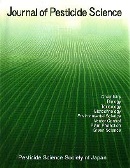Volume 29, Issue 4
Displaying 1-26 of 26 articles from this issue
- |<
- <
- 1
- >
- >|
Reviews
-
2004Volume 29Issue 4 Pages 299-303
Published: 2004
Released on J-STAGE: November 28, 2004
Download PDF (49K) -
2004Volume 29Issue 4 Pages 304-307
Published: 2004
Released on J-STAGE: November 28, 2004
Download PDF (174K)
Original Articles
-
2004Volume 29Issue 4 Pages 308-312
Published: 2004
Released on J-STAGE: November 28, 2004
Download PDF (388K) -
2004Volume 29Issue 4 Pages 313-321
Published: 2004
Released on J-STAGE: November 28, 2004
Download PDF (267K) -
2004Volume 29Issue 4 Pages 322-327
Published: 2004
Released on J-STAGE: November 28, 2004
Download PDF (116K) -
2004Volume 29Issue 4 Pages 328-331
Published: 2004
Released on J-STAGE: November 28, 2004
Download PDF (202K) -
2004Volume 29Issue 4 Pages 332-338
Published: 2004
Released on J-STAGE: November 28, 2004
Download PDF (338K) -
2004Volume 29Issue 4 Pages 339-347
Published: 2004
Released on J-STAGE: November 28, 2004
Download PDF (235K) -
2004Volume 29Issue 4 Pages 348-355
Published: 2004
Released on J-STAGE: November 28, 2004
Download PDF (158K) -
2004Volume 29Issue 4 Pages 356-363
Published: 2004
Released on J-STAGE: November 28, 2004
Download PDF (796K) -
2004Volume 29Issue 4 Pages 364-368
Published: 2004
Released on J-STAGE: November 28, 2004
Download PDF (128K)
Notes
-
2004Volume 29Issue 4 Pages 369-371
Published: 2004
Released on J-STAGE: November 28, 2004
Download PDF (247K) -
2004Volume 29Issue 4 Pages 372-375
Published: 2004
Released on J-STAGE: November 28, 2004
Download PDF (3442K) -
2004Volume 29Issue 4 Pages 376-379
Published: 2004
Released on J-STAGE: November 28, 2004
Download PDF (71K)
PART II (IN JAPANESE)
Abstracts for Original Articles
-
2004Volume 29Issue 4 Pages 381-383
Published: November 20, 2004
Released on J-STAGE: June 08, 2014
Download PDF (273K)
Commentaries
-
Article type: Commentaries
2004Volume 29Issue 4 Pages 384-390
Published: November 20, 2004
Released on J-STAGE: June 08, 2014
Download PDF (406K) -
Article type: Commentaries
2004Volume 29Issue 4 Pages 391-393
Published: November 20, 2004
Released on J-STAGE: June 08, 2014
Download PDF (255K)
Minireviews: Risk Assessment, Risk Management and Risk Communication for Pesticide Residues in Foods
-
Article type: Minireviews
2004Volume 29Issue 4 Pages 394-401
Published: November 20, 2004
Released on J-STAGE: June 08, 2014
Download PDF (666K)
Letter to Members
-
Article type: Letter to Members
2004Volume 29Issue 4 Pages 402-403
Published: November 20, 2004
Released on J-STAGE: June 08, 2014
Download PDF (146K)
Symposia
-
Article type: Symposia
2004Volume 29Issue 4 Pages 404-405
Published: November 20, 2004
Released on J-STAGE: June 08, 2014
Download PDF (125K)
-
2004Volume 29Issue 4 Pages 406
Published: November 20, 2004
Released on J-STAGE: June 13, 2014
Download PDF (42K)
-
2004Volume 29Issue 4 Pages 407
Published: November 20, 2004
Released on J-STAGE: June 13, 2014
Download PDF (44K) -
2004Volume 29Issue 4 Pages 408-410
Published: November 20, 2004
Released on J-STAGE: June 13, 2014
Download PDF (29K) -
2004Volume 29Issue 4 Pages 411-412
Published: November 20, 2004
Released on J-STAGE: June 13, 2014
Download PDF (30K) -
2004Volume 29Issue 4 Pages 413-418
Published: November 20, 2004
Released on J-STAGE: June 13, 2014
Download PDF (52K) -
2004Volume 29Issue 4 Pages 419
Published: November 20, 2004
Released on J-STAGE: June 13, 2014
Download PDF (60K)
- |<
- <
- 1
- >
- >|
